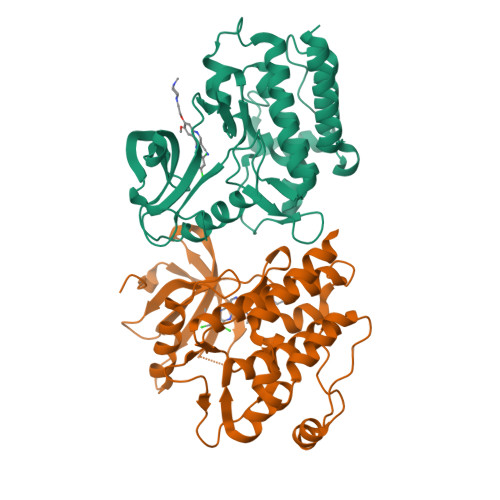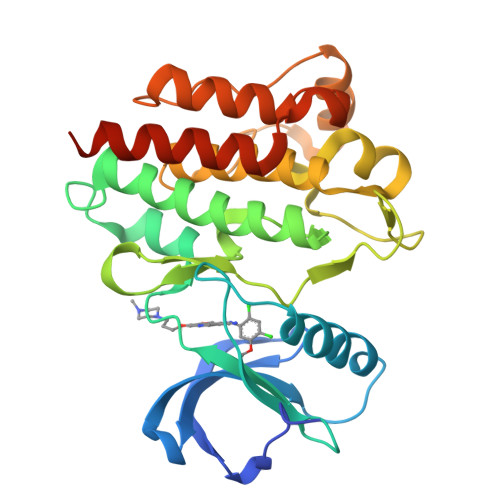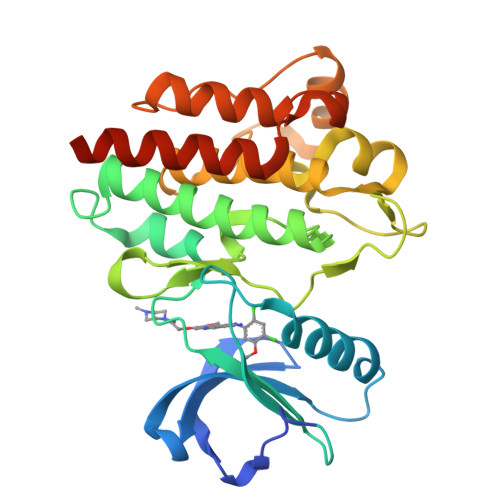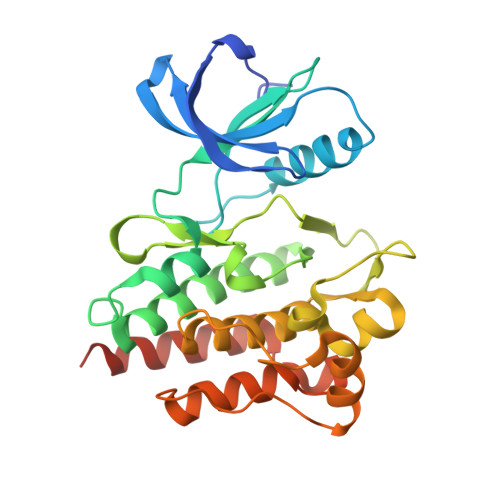Structural and spectroscopic analysis of the kinase inhibitor bosutinib and an isomer of bosutinib binding to the abl tyrosine kinase domain.
Levinson, N.M., Boxer, S.G.(2012) PLoS One 7: e29828-e29828
- PubMed: 22493660
- DOI: https://doi.org/10.1371/journal.pone.0029828
- Primary Citation of Related Structures:
3UE4 - PubMed Abstract:
Chronic myeloid leukemia (CML) is caused by the kinase activity of the BCR-Abl fusion protein. The Abl inhibitors imatinib, nilotinib and dasatinib are currently used to treat CML, but resistance to these inhibitors is a significant clinical problem. The kinase inhibitor bosutinib has shown efficacy in clinical trials for imatinib-resistant CML, but its binding mode is unknown. We present the 2.4 Å structure of bosutinib bound to the kinase domain of Abl, which explains the inhibitor's activity against several imatinib-resistant mutants, and reveals that similar inhibitors that lack a nitrile moiety could be effective against the common T315I mutant. We also report that two distinct chemical compounds are currently being sold under the name "bosutinib", and report spectroscopic and structural characterizations of both. We show that the fluorescence properties of these compounds allow inhibitor binding to be measured quantitatively, and that the infrared absorption of the nitrile group reveals a different electrostatic environment in the conserved ATP-binding sites of Abl and Src kinases. Exploiting such differences could lead to inhibitors with improved selectivity.
Organizational Affiliation:
Department of Chemistry, Stanford University, Stanford, California, United States of America. nickl@stanford.edu




















